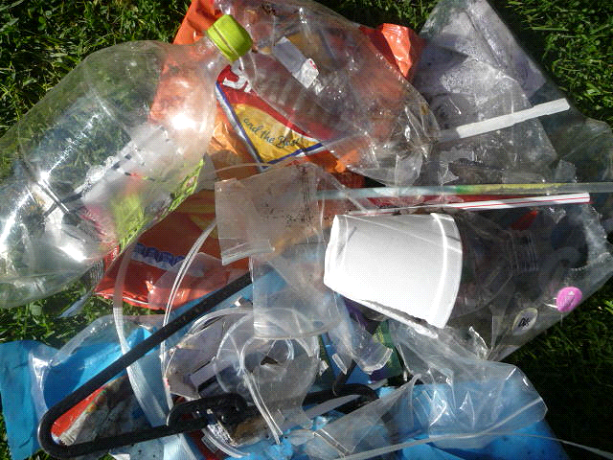Verifying Plastic Biodegradation Claims
Posted on March 7, 2012 by DrRossH in Plastic Waste News
From Del Andrus at Enso Plastics
I would like to make sure to clear up some things. I sit on the ASTM biodegradable and recycling of plastics subcommittees D 20.95 & D 20.96 and I have a good insight as to what is going on in the market in general terms.
First, the ISO codes (# 1-7) mentioned at the bottom of bottles and other plastic items are NOT recycling codes officially, they are resin identification codes, but because they have the chasing arrows, they are commonly mistaken as a recycle-ability statement. This is a hot topic right now which we are debating in our committee-should we decide to lose the chasing arrows to insure a clearer message? The true answer to what is recyclable is that all plastics ARE recyclable, but the sad reality is that only a very select few are-hence the need for landfill biodegradable. (again, litter is never a green solution) A quick call to your local municipal facility will tell you what is being recycled in your area. For instance, where I live in Phoenix (8th largest city in the US), they have only accepted #’s 1 & 2 (PET and HDPE). They have expanded to accept all numbers in the bin just this year…but what the reprocessing facility does with all of it is another story for another day.
The ASTM 5511 is a test method designed to validate that off gassing or bio degradation is happening. It is not a standard. I am involved with creating a standard specification that will be utilized by regulatory and private business alike. ASTM 5511 or 5526 is very necessary in determining a materials biodegradability. They are both STANDARD TEST METHODS and validate the materials response to microbial contact found in waste environments.
Testing methods both ASTM and ISO are appropriate for validation of scientific evidence, AND more is required as we go forward. As innovation goes, we are also developing more because of demand. Landfill biodegradable plastics has an exciting value proposition, and it is an exciting time to be involved in positive change towards plastics in our environment. And along with this evolution, the public and industry must be educated along the way. Hopefully this new standard specification will help do this, but sending the right message ( re verifiable biodegradability claims) is something we can do today.

 How many people today grab a takeaway coffee cup from the local cafe to drink on the go? We don’t know, but the number must be enormous.. Most every one of the above have a plastic top that will last 100s of years. Some cafes still use plastic cups that last a similar time. Is 10 minutes of coffee worth 100s of years of trash?
These items can be seen littering our gutters and on our streets all over the place. If they were all cardboard, they would still be littered, but they would, at least, be gone in a short time.
They do not need to be made of plastic.
How many people today grab a takeaway coffee cup from the local cafe to drink on the go? We don’t know, but the number must be enormous.. Most every one of the above have a plastic top that will last 100s of years. Some cafes still use plastic cups that last a similar time. Is 10 minutes of coffee worth 100s of years of trash?
These items can be seen littering our gutters and on our streets all over the place. If they were all cardboard, they would still be littered, but they would, at least, be gone in a short time.
They do not need to be made of plastic.
 On the way home from the gym last week, a distance of about 1 km (1/2 mile), I counted the items of plastic litter on the curb as I walked. In that short distance I counted 63 pieces of plastic litter. Plastic drink bottles, bottle tops, candy wrappers, plastic film, polystyrene fragments etc. That seemed to be a lot to me. I guess it is a generational thing. Our parents would have been horrified to see that amount, whereas it seems to go unnoticed by our youth of today. In another 20 years how many pieces will there be on this stretch, -- 200? What will today’s youth think of that new amount then when they are older? Will their children be so readily accepting of a higher amount of litter?
On the way home from the gym last week, a distance of about 1 km (1/2 mile), I counted the items of plastic litter on the curb as I walked. In that short distance I counted 63 pieces of plastic litter. Plastic drink bottles, bottle tops, candy wrappers, plastic film, polystyrene fragments etc. That seemed to be a lot to me. I guess it is a generational thing. Our parents would have been horrified to see that amount, whereas it seems to go unnoticed by our youth of today. In another 20 years how many pieces will there be on this stretch, -- 200? What will today’s youth think of that new amount then when they are older? Will their children be so readily accepting of a higher amount of litter?
Discussion · No Comments
There are no responses to "Verifying Plastic Biodegradation Claims". Comments are closed for this post.Oops! Sorry, comments are closed at this time. Please try again later.